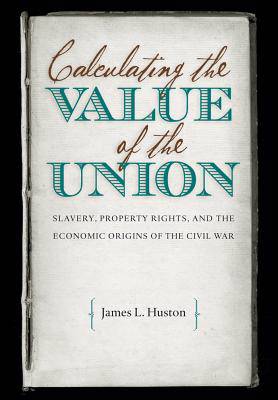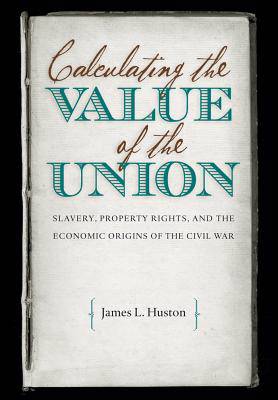
- Afhalen na 1 uur in een winkel met voorraad
- Gratis thuislevering in België vanaf € 30
- Ruim aanbod met 7 miljoen producten
- Afhalen na 1 uur in een winkel met voorraad
- Gratis thuislevering in België vanaf € 30
- Ruim aanbod met 7 miljoen producten
Zoeken
Calculating the Value of the Union
Slavery, Property Rights, and the Economic Origins of the Civil War
James L Huston
€ 72,95
+ 145 punten
Omschrijving
While slavery is often at the heart of debates over the causes of the Civil War, historians are not agreed on precisely what aspect of slavery--with its various social, economic, political, cultural, and moral ramifications--gave rise to the sectional rift. In Calculating the Value of the Union, James Huston integrates economic, social, and political history to argue that the issue of property rights as it pertained to slavery was at the center of the Civil War.
In the early years of the nineteenth century, southern slaveholders sought a national definition of property rights that would recognize and protect their ownership of slaves. Northern interests, on the other hand, opposed any national interpretation of property rights because of the threat slavery posed to the northern free labor market, particularly if allowed to spread to western territories. This impasse sparked a process of political realignment that culminated in the creation of the Republican Party, ultimately leading to the secession crisis.
Deeply researched and carefully written, this study rebuts recent trends in antebellum historiography and persuasively argues for a fundamentally economic interpretation of the slavery issue and the coming of the Civil War.
In the early years of the nineteenth century, southern slaveholders sought a national definition of property rights that would recognize and protect their ownership of slaves. Northern interests, on the other hand, opposed any national interpretation of property rights because of the threat slavery posed to the northern free labor market, particularly if allowed to spread to western territories. This impasse sparked a process of political realignment that culminated in the creation of the Republican Party, ultimately leading to the secession crisis.
Deeply researched and carefully written, this study rebuts recent trends in antebellum historiography and persuasively argues for a fundamentally economic interpretation of the slavery issue and the coming of the Civil War.
Specificaties
Betrokkenen
- Auteur(s):
- Uitgeverij:
Inhoud
- Aantal bladzijden:
- 416
- Taal:
- Engels
- Reeks:
Eigenschappen
- Productcode (EAN):
- 9781469629100
- Verschijningsdatum:
- 1/03/2016
- Uitvoering:
- Paperback
- Formaat:
- Trade paperback (VS)
- Afmetingen:
- 156 mm x 234 mm
- Gewicht:
- 630 g

Alleen bij Standaard Boekhandel
+ 145 punten op je klantenkaart van Standaard Boekhandel
Beoordelingen
We publiceren alleen reviews die voldoen aan de voorwaarden voor reviews. Bekijk onze voorwaarden voor reviews.











